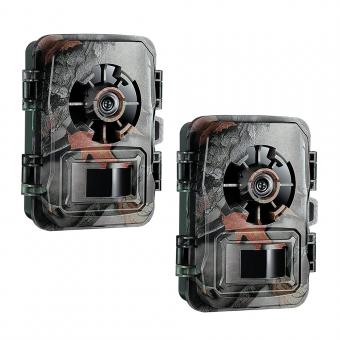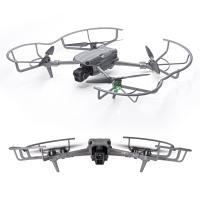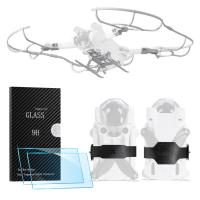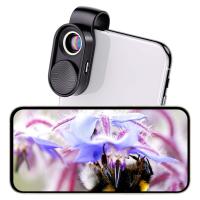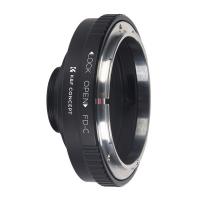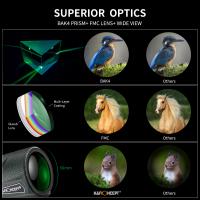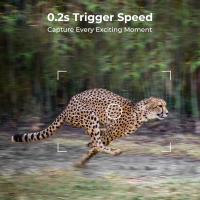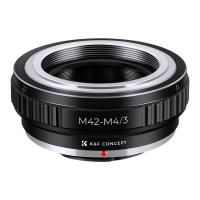How To Look Into Microscope With Both Eyes ?
To look into a microscope with both eyes, adjust the interpupillary distance of the eyepieces so that they align with your eyes. This can usually be done by moving the eyepieces closer together or further apart. Once the eyepieces are properly aligned, position your eyes close to the eyepieces without touching them. Look through both eyepieces simultaneously, keeping both eyes open. Adjust the focus using the coarse and fine focus knobs until the specimen comes into clear view.
1、 Binocular vision and depth perception in microscopy
To look into a microscope with both eyes and achieve binocular vision and depth perception, follow these steps:
1. Adjust the interpupillary distance: Start by adjusting the distance between the eyepieces to match the distance between your eyes. This ensures that the microscope's optical path aligns with your eyes' natural binocular vision.
2. Set the diopter adjustment: Many microscopes have a diopter adjustment on one or both eyepieces. This allows you to compensate for any differences in vision between your eyes. Adjust the diopter until the image appears sharp and clear in both eyes.
3. Use both eyes simultaneously: Position your eyes close to the eyepieces, keeping both eyes open. Avoid squinting or closing one eye, as this can disrupt binocular vision and depth perception.
4. Merge the images: Initially, you may see two separate images or a blurry image. To merge the images, focus on a specific point on the specimen and slowly adjust the focus knob until the image becomes clear. This helps your brain fuse the two images into a single, three-dimensional image.
5. Maintain proper posture: Sit upright and ensure that your head is aligned with the microscope. This helps maintain a consistent viewing angle and reduces eye strain.
Recent research suggests that binocular vision and depth perception play a crucial role in microscopy. It allows scientists and researchers to accurately perceive the three-dimensional structure of microscopic specimens, aiding in their analysis and understanding. Binocular vision provides a more immersive and detailed view, enhancing the ability to observe fine details and subtle changes in the specimen.
Furthermore, advancements in microscopy technology have led to the development of stereoscopic microscopes. These microscopes provide a more natural and immersive viewing experience by presenting slightly different images to each eye, mimicking the way our eyes perceive depth in the real world. Stereoscopic microscopes are particularly useful in fields such as biology, medicine, and material sciences, where depth perception is crucial for accurate analysis and interpretation of microscopic structures.
In conclusion, by adjusting the interpupillary distance, setting the diopter adjustment, using both eyes simultaneously, merging the images, and maintaining proper posture, one can achieve binocular vision and depth perception while looking into a microscope. This enhances the accuracy and depth of observation, aiding in scientific research and analysis.
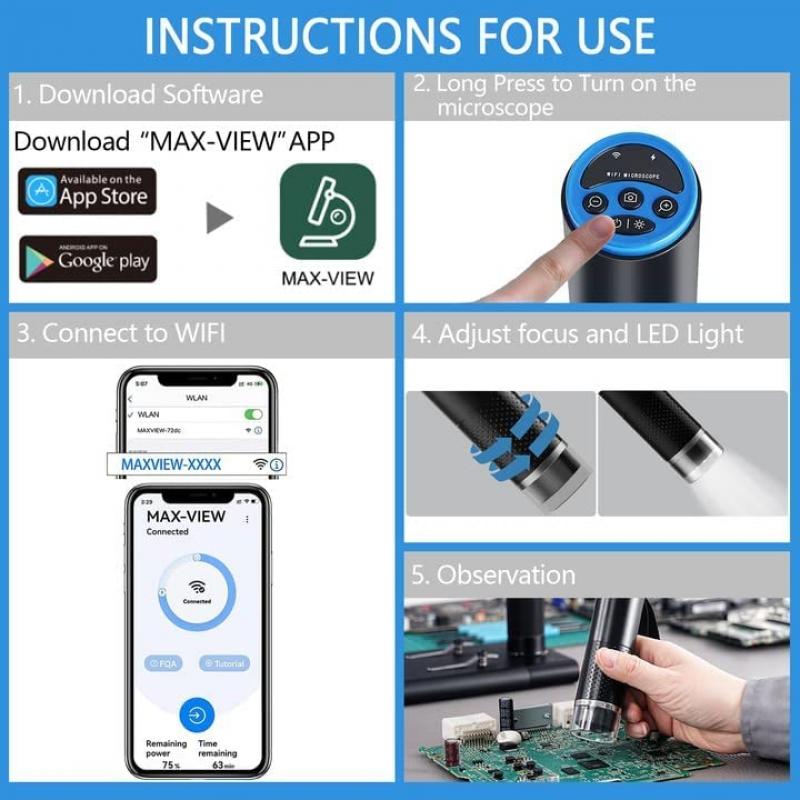
2、 Adjusting the interpupillary distance for comfortable binocular viewing
To look into a microscope with both eyes, it is important to adjust the interpupillary distance for comfortable binocular viewing. This adjustment ensures that the microscope's eyepieces are aligned with your eyes, allowing you to see a single, merged image.
To begin, place the microscope on a stable surface and adjust the height and angle of the microscope to suit your comfort. Next, locate the interpupillary distance adjustment knob, usually located on the binocular head of the microscope. This knob allows you to adjust the distance between the eyepieces to match the distance between your eyes.
To adjust the interpupillary distance, follow these steps:
1. Look through the microscope with one eye closed and focus on a specimen or slide.
2. Use the interpupillary distance adjustment knob to move the eyepieces closer together or farther apart until you see a single, merged image.
3. Open your other eye and check if the image is still merged. If not, continue adjusting until both eyes see a single, clear image.
It is important to note that the latest point of view suggests that some individuals may have a wider or narrower interpupillary distance than the average. In such cases, microscopes with adjustable eyepieces or those with a wider range of interpupillary distance adjustment may be more suitable. Additionally, some microscopes now come with digital imaging capabilities, allowing for easier viewing and sharing of microscope images.
Overall, adjusting the interpupillary distance is crucial for comfortable and accurate binocular viewing through a microscope. By ensuring that both eyes see a single, merged image, you can enhance your viewing experience and make the most of your microscopic observations.
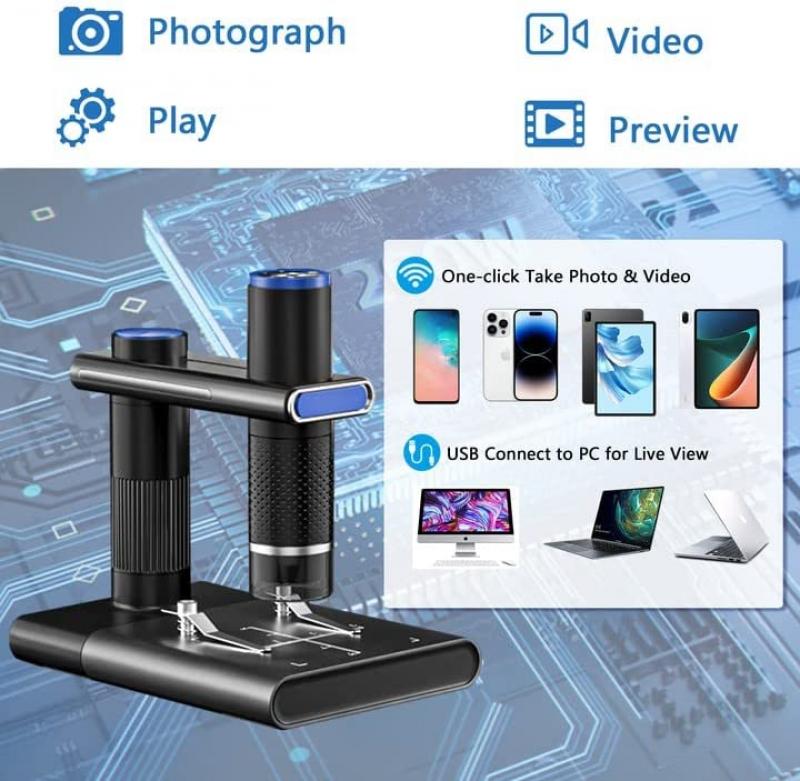
3、 Properly aligning the microscope eyepieces for optimal vision
Properly aligning the microscope eyepieces for optimal vision is essential to ensure accurate observations and reduce eye strain. To look into a microscope with both eyes, follow these steps:
1. Adjust the interpupillary distance: Start by adjusting the distance between the eyepieces to match the distance between your eyes. Grasp the eyepiece tubes and gently move them closer or farther apart until you see a single circular field of view.
2. Adjust the diopter settings: Each eyepiece has a diopter adjustment ring that compensates for any differences in vision between your eyes. Close your right eye and focus the microscope using the coarse and fine focus knobs. Then, close your left eye and adjust the diopter ring on the left eyepiece until the image appears sharp and clear.
3. Use both eyes simultaneously: Open both eyes and look through the eyepieces. Adjust the focus using the coarse and fine focus knobs until the specimen comes into clear view. Avoid squinting or straining your eyes; instead, relax and allow your eyes to naturally adjust to the image.
It is worth noting that some microscopes come with binocular eyepieces, which provide a more comfortable viewing experience. Binocular eyepieces allow each eye to focus independently, reducing eye fatigue and providing a three-dimensional view of the specimen.
In recent years, advancements in microscope technology have led to the development of digital microscopes with built-in cameras. These microscopes allow for the simultaneous use of both eyes while also capturing images or videos of the observed specimen. This feature is particularly useful for documentation, sharing findings, or conducting remote observations.
Remember, proper alignment and adjustment of the microscope eyepieces are crucial for obtaining accurate and detailed observations. By following these steps, you can ensure optimal vision and enhance your microscopy experience.

4、 Using the diopter adjustment to compensate for individual eye differences
To look into a microscope with both eyes, you can use the diopter adjustment to compensate for individual eye differences. The diopter adjustment is a feature found on most microscopes that allows you to focus the image in each eyepiece independently. This is particularly useful for individuals who have different prescriptions for each eye.
To begin, place the microscope slide on the stage and adjust the focus using the coarse and fine focus knobs until the image is clear in one eyepiece. Next, close that eye and look through the other eyepiece. Use the diopter adjustment ring located on the eyepiece to focus the image in the second eye. By turning the diopter adjustment ring, you can compensate for any differences in vision between your two eyes.
It is important to note that the diopter adjustment should be done while looking at a sample slide, as the distance between your eyes and the microscope can affect the focus. Additionally, it is recommended to adjust the diopter for each eye separately, as the prescription may differ.
The latest point of view on using the diopter adjustment is that it provides a more comfortable and accurate viewing experience for individuals with different eye prescriptions. It allows for a clearer and more focused image, reducing eye strain and improving overall viewing quality. This feature is especially beneficial for those who spend extended periods looking through a microscope, such as researchers, scientists, and students.
In conclusion, using the diopter adjustment to compensate for individual eye differences is the recommended method for looking into a microscope with both eyes. It ensures a clear and focused image, providing a more comfortable and accurate viewing experience.














